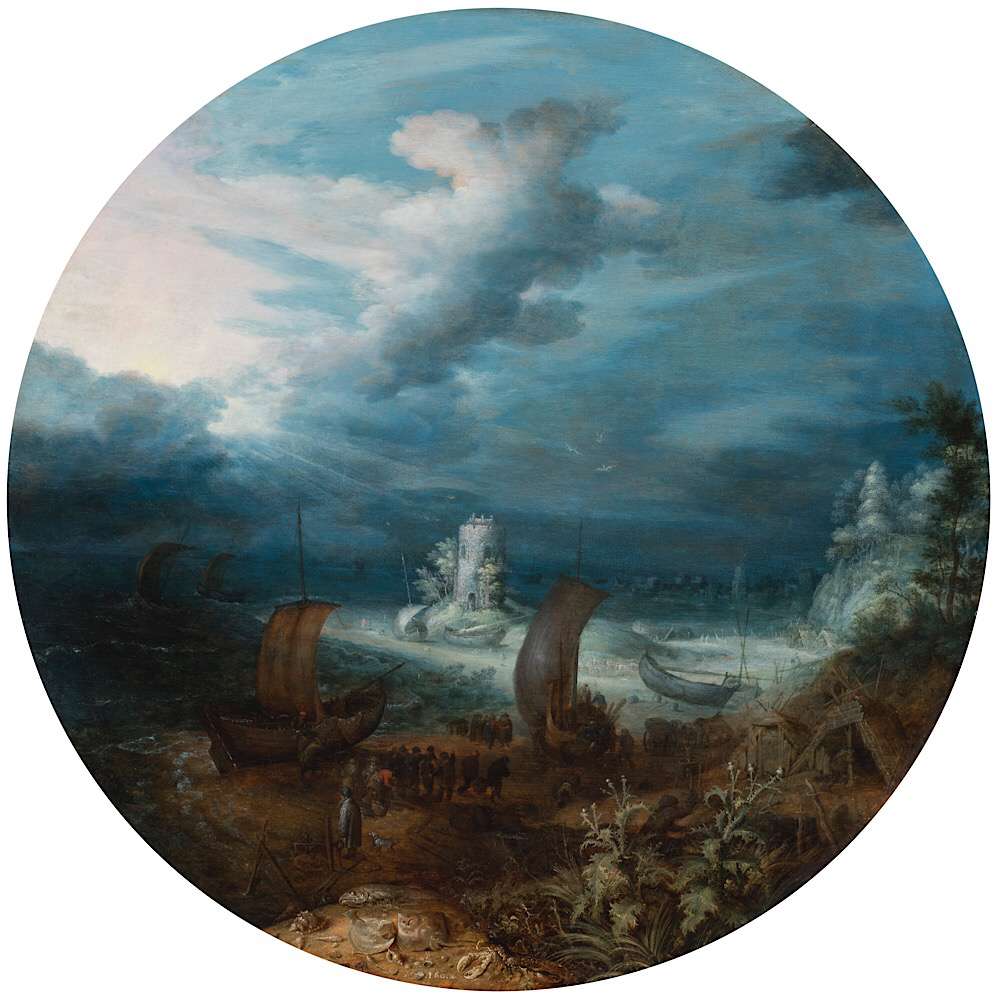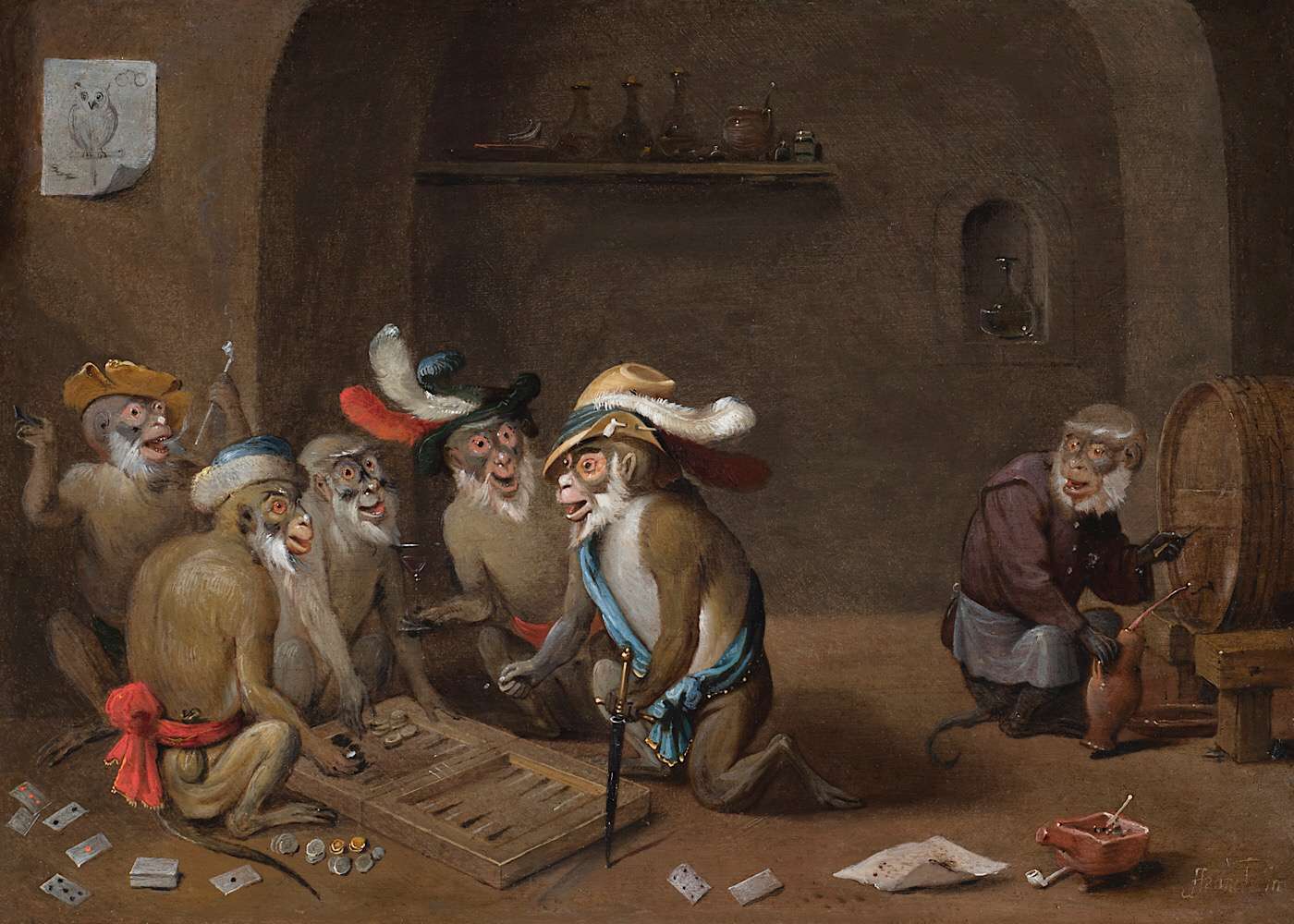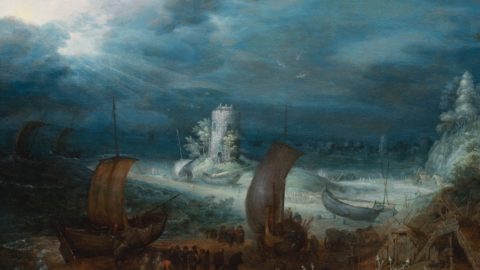The Florentine exhibition of the Turin Gallery Caretto & Occhinegro see the exceptional Coastal Landscape with Saracen Tower by Roelant Savery, a large 50 cm circular table of the highest quality. The work, published in the reference monograph, is a capital example of art achieved by one of the most famous landscape specialists between the 500th and 600th centuries and constitutes a unicum in the scenario of the international art market.
For a historical and stylistic insight, the exhaustive study conducted by Prof. Mullenmeister in his fundamental monograph on RoelantSavery remains fundamental.
According to the eminent scholar, the work, which has been absent from the market for more than twenty years, is an important testimony of the collective work of Roelant with his nephew Hans II (also known as Jan), who contributed fish and crayfish in foreground and with the group of fishermen in the middle.
This painting, together with a small number of works all strongly united by compositional and stylistic unity, is part of the corpus around which the question of the supposed trip to Italy of the Saveries revolves, which would have had its fulcrum in the Istrian region. Their brief stay in Tyrol had been hypothesized, but the evidence deduced from the types of landscapes depicted by the Saveries in the years 1612-1618, seem to make their presence in Istra much more plausible, after their well-documented stay in Prague for Rudolf II and Matthias I.
In this sense, the most important comparison is col Coastal weighing preserved in the Uffizi and dated 1614, on the basis of which Mullenmesiter also places our work chronologically. Identical in the two works are the thistle plants in the foreground on the right, as well as the fishermen's huts and the boats described with technical detail (built with the method of crossed planks). Even the Saracen tower illuminated by the sun appears in a similar form in the Florentine picture, just as the stroke of light that illuminates 4/5 of the scene from the top left is identical.
Moreover, beyond the unanimous consensus on the paternity of the painting which from anthology, the formidable beauty of this large circular panel speaks for itself, both in terms of inventiveness and technical knowledge.

Coastal landscape with fishermen in front of a Saracen tower
Oil on circular panel
Diameter cm 49,5
c.1613-14
The work, which in its circularity is still reminiscent of the "landscape-world" as Patinir and Henri met de Bles had conceived it, is imbued with a cosmic breath: the magnificent clouds, perfectly executed, allow the sun's rays to penetrate the earth, now free to illuminate the earth and men, who have returned after the hardships of fishing and finally safe from the terrible Leviathans that the sea, gloomy, abysmal and threatening , still hides. On the other side, the coast is immediately swallowed up by a forest of conifers, leaving Man with the only vital space which, like a thin line, extends between the sea and the forest. The animals and plants are reproduced with an eye poised between scientific relevance and erudite fable, according to the typical approach of Hans Savery (his famous painting depicting the Dodo, still not extinct in the XNUMXth century). With an epicness worthy of Bruegel the Elder, the Artist deals with the typical theme of Flemish landscaping of the time of the relationship between Man and Nature understood as an existential reflection on the limits of the first and on the meaning of the second: the small size of the human beings portrayed , even in the virtuous exercise of their technical skills (fishing and architecture as coercion and domination of the world), reduces them to biblically impotent creatures, subjugated by a mechanical and natural cycle from which they cannot free themselves, unaware puppets of a design bigger than them, perhaps played by physical forces whose functioning is unknown or by metaphysical entities that manifest themselves through natural phenomena, be they storms, flashes of light in the clouds or the impenetrable - poignant - beauty of the world.
Among the fifteen works exhibited we also point out a particularly curious but equally beautiful work: the so-called singererie (word literally translated as "monkey games"), signed by Frans Francken and considered by the expert of reference a rare document of outstanding quality level: in fact, no other paintings with this subject bearing the author's signature are known.

Monkey Games (allegory of the human condition)
Oil on copper
22,5×31,5cm
c.1660-70
Work signed F.Franck





